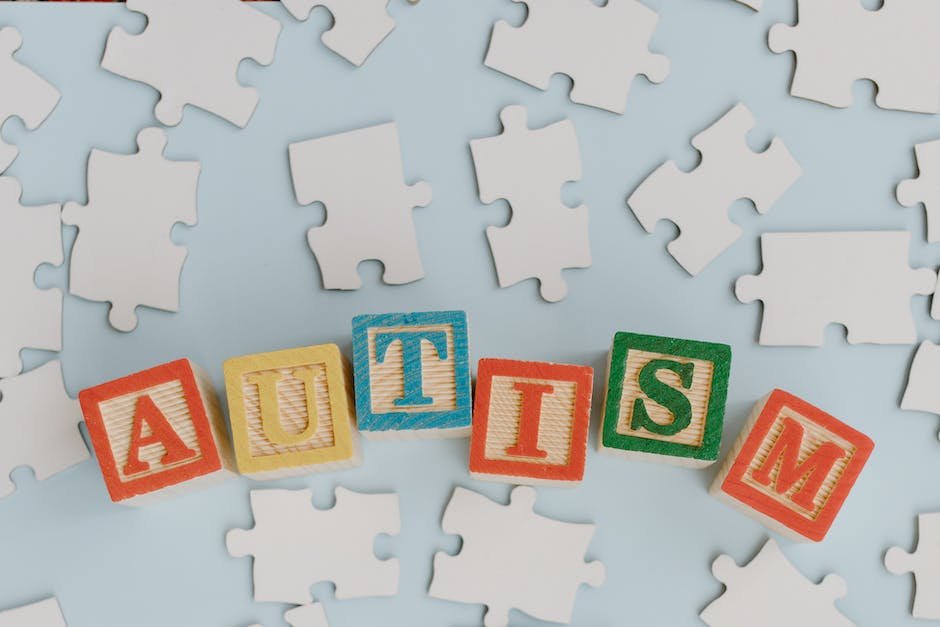
Autism Spectrum Disorder (ASD) is a complex developmental condition that encompasses a broad range of behaviors and experiences, one of which can be aggression. It’s important to recognize aggression in autistic individuals not as a defiant act, but as a form of communication, often borne out of frustration, sensory overload, or the disruption of cherished routines. Gaining an understanding of the different triggers and manifestations of aggression can lead to more effective and compassionate strategies for support and intervention. This entails not only identifying the suitable pharmaceutical treatments but also exploring the myriad of non-pharmacological options that can accompany or even substitute medication. As we embark on this topic, our commitment is to uncovering the nuanced facets of addressing aggression in autism, ensuring that our approach is both empathetic and evidence-based.
Understanding Aggression in Autism
Understanding Aggression in Children with Autism: A Parent’s Perspective
As parents, we’re on a constant learning curve, navigating through the surprises and challenges that come with raising our little ones. But for those of us with children on the autism spectrum, certain behaviors, like aggression, can leave us perplexed and seeking answers. So, why do some children with autism experience aggressive behavior? Let’s gently unpack this together, in our typical neighborly fashion.
Aggression in children with autism might seem sudden or unprovoked, but it’s important to recognize that it’s often a form of communication. When words aren’t enough or can’t be used effectively, frustration can bubble over, leading to aggressive actions. It’s not a reflection of parenting skills; rather, it’s a part of the unique set of challenges that these special kiddos face.
One major contributor to aggression can be sensory overload. Our autism-touched cherubs perceive the world differently. A seemingly benign stimulus like the hum of a refrigerator, the touch of a tag in a shirt, or the bright lights of a supermarket can be overwhelming. When sensory input becomes too intense, it might trigger a fight-or-flight response leading to aggression.
Communication struggles also play a big role. Imagine being in a foreign country without a grasp of the language and an urgent need arises. That panic and sense of urgency can echo what children with autism feel daily. When they can’t articulate their thoughts or needs, that inner turmoil can manifest as aggressive behavior.
Let’s not forget, routines and predictability are like warm hugs for these kiddos. A sudden change – a new route to school or a favorite cup gone missing – can feel like the rug has been pulled out from under them. This can lead to distress and, you guessed it, potentially aggressive reactions.
So what do we do, nurturing flock leaders that we are? Patience, patience, and more patience. And, a sprinkle of detective work can go a long way. Being attuned to the unique triggers that affect each child helps create a stable, understanding environment. Also, proactive communication, whether through alternative methods like picture cards or sign language, provides a voice to their concerns.
It’s also vital to advocate for our young ones, educating those around us about the why’s of these behaviors. Building a supportive community ensures that our children feel accepted and less prone to distress-induced aggression.
Remember, behind every behavior is a need trying to be expressed. As homemakers, life-shapers, and bearers of boundless love, let’s create spaces where our children feel heard, understood, and most importantly, safe. Together, nurturing the unique brilliance within each child, aggressive behaviors can be understood and lovingly managed.

Common Medications Used to Treat Aggression
Helping Hands: Medication Options for Managing Aggression in Autism
When it comes to managing aggression in children with autism, there’s a whole spectrum of options that families and caregivers can explore. While we’ve outlined the significance of non-medical strategies, sometimes, additional support from prescribed medications becomes necessary to help our kids lead calmer, more fulfilling lives. Understanding the commonly prescribed medications can offer families another layer of support, complementing the therapies and accommodations already in place.
At the forefront, it should be clear that medication isn’t a one-size-fits-all solution, nor is it the first line of defense. But, in instances where aggression presents a significant challenge, healthcare providers may consider these pharmacological options:
- Risperidone (Risperdal) – This antipsychotic medication is one of the few with FDA approval for treating irritability and aggression in children and adolescents with autism. It works by affecting the levels of certain chemicals in the brain, which can help to reduce symptoms like aggression, self-harm, and sudden mood changes.
- Aripiprazole (Abilify) – Also approved by the FDA for children with autism who exhibit aggressive behaviors, aripiprazole acts on various receptors in the brain to help manage irritability. It’s especially noteworthy for having a lower risk profile for some side effects common in antipsychotics, such as weight gain and sedation, though parents and caregivers should still be observant of any changes once the medication is initiated.
- Mood Stabilizers – Medications typically used for bipolar disorder, like valproic acid (Depakote), lithium, and lamotrigine (Lamictal), may also be prescribed to help level out the mood swings that can sometimes accompany autism, which in turn can help reduce aggressive episodes.
- SSRIs – Selective serotonin reuptake inhibitors, more commonly known for treating depression and anxiety, may be utilized to help manage aggression. Examples include fluoxetine (Prozac) and sertraline (Zoloft). These medications can help by improving mood and reducing anxiety, which can sometimes trigger aggressive behavior.
- Beta-Blockers – Mainly used for treating high blood pressure, beta-blockers such as propranolol (Inderal) can sometimes help control some of the physical symptoms associated with aggressive behavior, like rapid heart rate and trembling.
It’s worth highlighting that these medications are not typically the first route taken and may not be suitable for all children. It’s crucial that any decision around medication is made collaboratively, involving healthcare providers, the child’s caregivers, and when possible, the child themselves. Monitoring for side effects and adjusting approaches as the child grows and changes is an essential part of the process. In some cases, the right medication can make a significant difference, improving not just the child’s quality of life but the dynamics of the household.
Always remember, when it comes to managing aggression in autism, patience, understanding, and a whole lot of heart go into every decision made. Here’s to nurturing every aspect of growth for our unique and wonderful kids!

Non-Medication Interventions
When considering the whole child, it’s crucial to explore non-medical strategies alongside any potential medical interventions for managing aggression in individuals with autism. It’s a balancing act that hinges on understanding the unique needs of each child and fostering an environment where they can thrive.
Diving deeper into non-medical strategies, structured physical activities can play a significant role in reducing pent-up energy that may lead to aggressive behaviors. Activities like swimming, jogging, or even sensory-friendly yoga can help in channeling that energy into something positive and calming. Moreover, engaging in these activities as a family not only supports the child but strengthens familial bonds.
Social stories are another powerful tool. They can guide individuals with autism through various social interactions, helping them navigate scenarios that may otherwise lead to frustration and aggression. By visualizing outcomes and responses, social stories promote behavioral understanding and empathy in a gentle, accessible way.
Another avenue worth exploring are behavioral therapies, such as Applied Behavior Analysis (ABA). Tailored to the individual, these therapies aim to reinforce positive behaviors and diminish undesirable ones in a compassionate, structured environment. It’s important, however, to choose a therapist who aligns with the family’s values and the child’s comfort.
For families with pets, animal-assisted therapy is a heartwarming option. The presence of animals can provide a sense of calm and comfort to autistic individuals, particularly during moments of high stress that might trigger aggression. It is something magical about the bond that can form between a child and an animal companion – it can speak directly to the heart without the need for words.
Furthermore, dietary considerations can sometimes affect behavior. Consulting with a nutritionist to identify any potential food sensitivities or nutritional deficiencies could be beneficial. Some families have noticed changes in aggression levels after adjusting diets, though this will vary widely from child to child.
Transition aids also deserve mention. Using timers, visual schedules, or other transition signals can assist individuals with autism in understanding what comes next, thereby reducing anxiety that might trigger aggressive outbursts. These aids provide comfort in predictability and control during day-to-day activities.
Collaborative decision-making with healthcare providers, caregivers, and—where appropriate—the child is paramount in any approach to managing aggression. Open communication lines ensure that everyone involved is on the same page and working towards the child’s best interests. Remember, each strategy may need revisiting and tailoring as the child grows and changes—their journey is dynamic, and so too must be our support.
Monitoring not only the effectiveness of the chosen strategies but also the child’s overall well-being is essential. We’re looking for positive impacts on the child’s quality of life, not just a reduction in aggressive behaviors. The ultimate goal is to foster a fulfilling life where the individual with autism feels understood, respected, and loved.
It is through collective patience, understanding, and an abundance of love that we as a community can support individuals with autism in managing aggression. Never underestimate the transformative power of an empathetic approach; it is here, in the realm of love and understanding, where true change blossoms. By walking alongside our children with unwavering support, we create a world where they have every opportunity to flourish. 🌟

The Role of Caregivers and Professionals
When it comes to supporting children with autism who are experiencing aggression, there’s a host of resources that parents and professionals can utilize to nurture and aid these bright and unique individuals. Though we’ve previously discussed the value of understanding aggression as a form of communication and the emphasis on creating a predictable, safe environment, it’s equally important to explore the various options available, including the role medications can play.
Now, a very critical piece of the puzzle is examining non-medical strategies that can soothe and redirect energy in positive ways. Structured physical activities, such as swimming or yoga, can be wonderfully effective. These activities not only help in managing pent-up energy that could otherwise express itself as aggression but also serve as an outlet for stress and enhance overall well-being.
On the therapeutic side of things, social stories have proven their worth by helping individuals with autism navigate complex social situations. These tailored narratives can enhance understanding and foster empathy, making interactions less stressful. Behavioral therapies, with an emphasis on Applied Behavior Analysis (ABA), are also integral. ABA focuses on reinforcing positive behavior while decreasing undesirable actions through a reward-based system.
Animals have a special way of reaching people, and it’s no different for those on the autism spectrum. Animal-assisted therapy can offer a sense of calm and companionship, acting as a buffer in times of anxiety that might lead to aggression.
The part diet plays in our overall mood cannot be overstated. For children with autism, it’s beneficial to consider potential food sensitivities or deficiencies that could be influencing aggression levels. A well-balanced diet, attuned to an individual’s needs, can make all the difference.
Transitioning between activities can be a source of significant stress for children with autism. Luckily, there are numerous transition aids like timers, visual schedules, and clear signals that can help reduce anxiety by adding elements of predictability and control to a child’s environment.
Now, let’s pivot to the role of medication. There are instances where medication might be necessary, and it’s vital to recognize and respect these circumstances. Several FDA-approved medications, including Risperidone and Aripiprazole, can be prescribed to help manage aggression symptoms. These antipsychotic medications can reduce irritability and aggression by balancing certain chemicals in the brain.
Along with antipsychotics, there are mood stabilizers, SSRIs, and beta-blockers, each helping in distinct ways. Mood stabilizers could level out severe mood swings, SSRIs might improve mood and reduce anxiety, while beta-blockers could address the physical symptoms associated with aggression.
But medication isn’t a decision to be taken lightly. It requires collaborative decision-making with healthcare providers, caregivers, and the child, ensuring everyone’s on board and understands the implications. We must also keep a watchful eye on potential side effects and remain flexible to adjusting medication as the child grows and changes.
Above all, the beneficial impact of medication on a child’s quality of life and the household’s dynamic can be substantial. It allows for smoother days and more harmonious relationships, which is the ultimate goal.
Behind every strategy, tip, or treatment option, remember this: patience, understanding, and love are the heartbeats of managing aggression in children with autism. They’re what fuel all our decisions and they’re what make a world of a difference in the lives of these incredible children. Let’s continue to approach each day with that love and dedication, as we advocate for and support every child’s unique journey.

Potential Side Effects and Monitoring
Tackling Side Effects of Aggression Medications in Children with Autism: A Parental Guide to Safe Monitoring
Aggression in children with autism presents a unique set of challenges for families. While the first part of the series provided extensive strategies and insights into managing aggression through non-medical approaches, sometimes medication becomes a necessary tool in the care plan. It’s vital for parents to be informed about the potential side effects when their child is prescribed medication for aggression.
When it comes to medications like antipsychotics, which include Risperidone and Aripiprazole, there are several side effects that parents should be on the lookout for. Weight gain is a common concern, which can lead to other health issues like diabetes or elevated cholesterol levels. Parents might also notice their child experiencing symptoms such as drowsiness, hormonal changes, or even involuntary movements known as tardive dyskinesia.
Mood stabilizers, while effective for smoothening out those roller coaster emotions, might also bring about side effects ranging from gastrointestinal issues to tremors or cognitive difficulties. These medications require blood tests and consistent monitoring to ensure they remain at a therapeutic level, not causing more harm than good.
When SSRIs are introduced to improve mood and decrease anxiety, they too can have side effects. It’s not unusual for children to potentially experience gastrointestinal disturbances, headaches, or in some cases, increased agitation. These symptoms need to be observed and reported to the physician promptly.
The use of beta-blockers can decrease physical symptoms related to aggressive outbursts, such as a rapid heart rate or tremors; however, caution is necessary as they may affect blood pressure and respiratory rates. Parents should keep a journal of observed physiological changes to share with healthcare providers.
No matter the medication, it’s crucial that ongoing monitoring is a collaborative effort. Regular consultations with the healthcare provider, discussions about observed behaviors and side effects, and modifications of dosages all play a part in safeguarding the child’s health and well-being. This is especially true as children grow, and their bodies change. Observation and adaptation are key.
The ultimate goal, when incorporating medication into a treatment plan, is to improve the child’s quality of life and enable better dynamics within the household. It’s a delicate balance between managing the aggression and keeping side effects to a minimum for the sake of the child’s overall happiness and development.
Thus, the journey of managing aggression in children with autism continues to be a compassionate blend of vigilance and advocacy. Embracing the complexity of each unique child ensures that they are not defined by their challenges but supported through every step towards a more peaceful and joyful life.

Addressing aggression in individuals with autism demands attention to a complex interplay of factors, including effective pharmaceutical interventions, comprehensive behavior strategies, and ongoing support for those directly involved in care. The significance of rigorous monitoring and the careful tailoring of treatment cannot be overstated. By employing a collaborative spirit that embraces the full gamut of therapeutic modalities, we can hope to improve the quality of life not only for those living with autism but also for the families and professionals who support them. Ultimately, the measures we take to understand and mitigate aggression in autism are reflections of our broader commitment to fostering an inclusive and supportive society for all its members.




